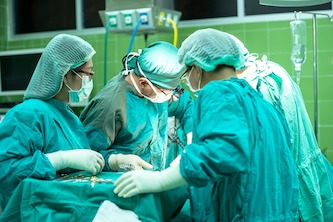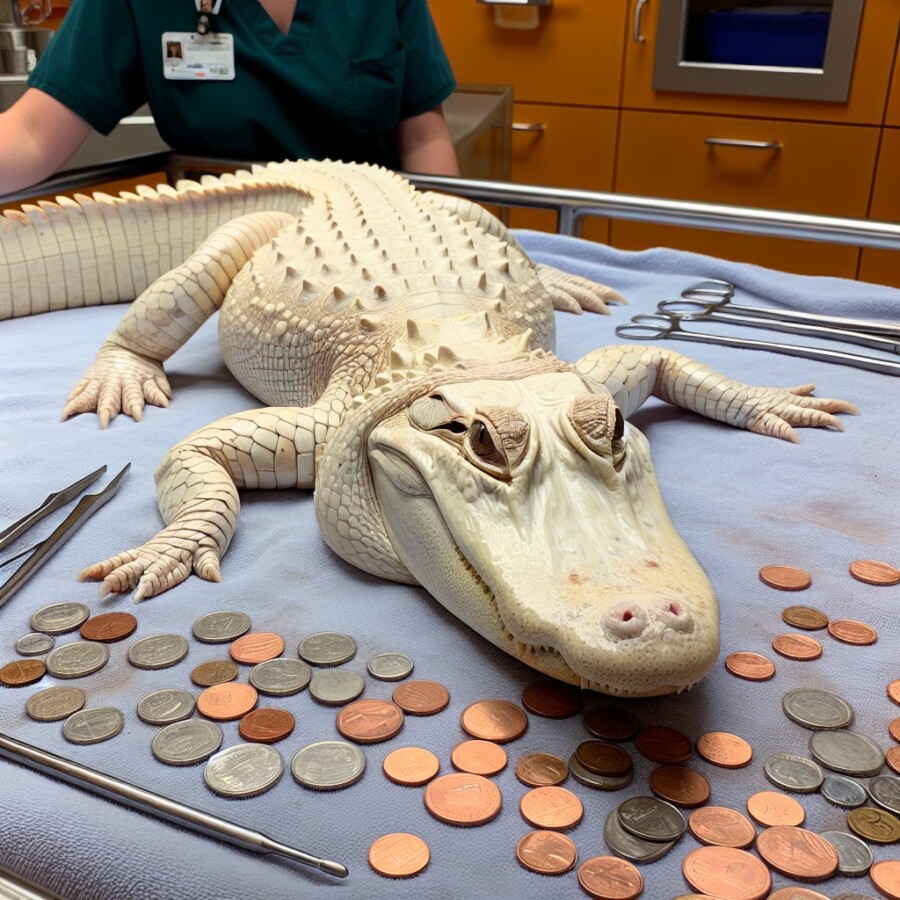A major medical breakthrough happened in New York when doctors did the first complete eye transplant on a guy named Aaron James. The surgery took 21 hours and also included a rare partial face transplant. Even though it’s not for sure if he’ll get his sight back, experts think this is a big step in helping millions of people see again.
Aaron James is a worker from Arkansas who got really hurt in an electrical accident. Over 140 healthcare pros at NYU Langone Health did the surgery, and it’s a huge deal in medical history. His right eye still works, but the successful eye transplant gives hope for more progress in fixing vision.
The surgery helps doctors learn more about how the human eye heals. They say the goal isn’t to promise Aaron will see again, but to make way for more progress. They put adult stem cells into the optic nerve during the surgery to help it heal. The face and eye came from one guy in his 30s who donated them.
Aaron is the 19th person in the US to get a face transplant, and doctors are watching him closely. His wife felt a mix of emotions when she saw him after the surgery, feeling relieved and happy that he’s getting better. Aaron, a military vet, thanked the donor and their family for making the surgery possible and changing his life.
This big achievement in surgery and transplants gives hope to people with similar health problems and sets the stage for more progress in fixing vision.
Original news source: US veteran gets world’s first eye transplant (BBC)
Listen
Slow
Normal
Fast
Group or Classroom Activities
Warm-up Activities:
– News Summary
Instructions: Students will work in pairs to summarize the article in their own words, aiming to do so in under two minutes. They should focus on the main points: the breakthrough eye transplant surgery, the patient Aaron James, the potential implications for future vision restoration, and the emotional reaction of Aaron’s family.
– Vocabulary Pictionary
Instructions: Write down key vocabulary words from the article (such as transplant, breakthrough, optic nerve, donor, etc.) on individual slips of paper. Divide the class into two teams. Members of each team take turns drawing the words on the board without speaking or writing letters or numbers, while their team guesses the word within a set time limit.
– Opinion Spectrum
Instructions: Create a line in the classroom representing a spectrum of opinions about the potential of eye transplants to restore sight. One end signifies ‘Very Optimistic’ and the other ‘Very Pessimistic’. Read statements related to the topic, and have students place themselves along the spectrum according to their opinion. Afterwards, select students from different points on the spectrum to explain their reasoning.
– Future Predictions
Instructions: Ask students to imagine the future of medical transplants based on the article. They will write a short paragraph predicting the advancements in the next 10, 20, or 50 years. Encourage creativity, but remind them to use information from the article as a starting point for their predictions.
– Think-Pair-Share
Instructions: Pose a question to the class based on the article, such as “Do you believe that the risks involved with transplant surgeries are justified by the potential benefits?” Students will first think individually, then pair up with a partner to discuss their thoughts, and finally, share their conclusions with the class. This activity encourages students to articulate their ideas and listen to differing viewpoints.
Comprehension Questions:
1. What significant medical procedure did doctors perform on Aaron James in New York?
2. How long did the groundbreaking surgery take to complete?
3. Besides the complete eye transplant, what other surgical procedure did Aaron James undergo?
4. What is the main goal of the surgery, according to the doctors?
5. From whom did Aaron receive the donated eye and part of the face?
6. How many people in the US have received a face transplant before Aaron?
7. How did Aaron’s wife react when she saw him after the surgery?
8. What is the broader impact of Aaron James’s surgery for other people with vision problems?
Go to answers ⇩
Listen and Fill in the Gaps:
A major (1)______ breakthrough happened in New York when doctors did the first complete eye transplant on a guy named (2)______ James. The surgery took 21 hours and also (3)______ a rare partial face transplant. Even though it’s not for sure if he’ll get his sight back, experts think this is a big step in (4)______ millions of people see again.
Aaron James is a worker from Arkansas who got really hurt in an electrical (5)______. Over 140 healthcare pros at NYU Langone Health did the surgery, and it’s a huge deal in medical (6)______. His right eye still works, but the successful eye (7)______ gives hope for more progress in fixing vision.
The surgery helps doctors learn more about how the human eye (8)______. They say the goal isn’t to promise Aaron will see again, but to make way for more progress. They put adult stem cells into the (9)______ nerve during the (10)______ to help it heal. The face and eye came from one guy in his 30s who (11)______ them.
Aaron is the 19th (12)______ in the US to get a face transplant, and doctors are watching him closely. His wife felt a mix of emotions when she saw him after the surgery, feeling relieved and happy that he’s getting better. Aaron, a (13)______ vet, thanked the donor and their family for (14)______ the surgery possible and changing his life.
This big achievement in surgery and transplants gives hope to people with similar health (15)______ and sets the stage for more progress in fixing (16)______.
Go to answers ⇩
Discussion Questions:
Students can ask a partner these questions, or discuss them as a group.
1. What is a medical breakthrough and why is it important?
2. How would you feel if you were to undergo a major surgery like an eye transplant?
3. Do you think science should keep pushing the limits with surgeries like these? Why or why not?
4. What do you think it means to give someone hope for a better future?
5. Have you or anyone you know ever donated or received an organ? What was that like?
6. What is your opinion on organ donation? Would you consider donating?
7. How do you think Aaron’s life might change after this surgery?
8. Do you believe that with modern medicine, most health problems can be fixed? Why or why not?
9. What are stem cells, and why might they be important in surgeries?
10. Do you think Aaron’s military background might have influenced his decision to undergo this surgery? Why might that be?
11. How do you feel about the use of adult stem cells in medical treatments?
12. Can you imagine what Aaron’s wife might have felt seeing him after the surgery? Why might she have mixed emotions?
13. What do you think are the biggest challenges for someone recovering from a transplant surgery?
14. Do you like the idea of doctors learning from each surgery to improve future ones? Why is that beneficial?
15. Do you think surgeries like Aaron’s should be more widely available, or should they be limited to certain cases? Why?
Individual Activities
Vocabulary Meanings:
Match each word to its meaning.
Words:
1. breakthrough
2. transplant
3. surgery
4. progress
5. electrical
6. optic
7. stem
8. achievement
Meanings:
(a) A significant discovery or development
(b) Forward or onward movement toward a destination
(c) A type of cell that can develop into different types of cells
(d) The process of transferring an organ or tissue from one person to another
(e) A medical procedure performed by a doctor
(f) Something that has been accomplished successfully
(g) Relating to electricity or electric currents
(h) Relating to the eye or vision
Go to answers ⇩
Multiple Choice Questions:
1. Who was the first person to receive a complete eye transplant and a rare partial face transplant?
(a) John Smith
(b) Aaron James
(c) Michael Johnson
(d) David Brown
2. How long did the surgery take?
(a) 15 hours
(b) 30 hours
(c) 21 hours
(d) 10 hours
3. What happened to Aaron James that led to the need for the surgery?
(a) He was hurt in an electrical accident
(b) He was in a car accident
(c) He fell from a building
(d) He got injured in a sports game
4. How many healthcare professionals were involved in the surgery?
(a) Over 100
(b) Over 200
(c) Over 140
(d) Over 50
5. What did doctors put into the optic nerve during the surgery to help it heal?
(a) Medication
(b) Metal rods
(c) Antibiotics
(d) Adult stem cells
6. Where did the face and eye for the transplant come from?
(a) One guy in his 30s who donated them
(b) A woman in her 40s who donated them
(c) A teenager who donated them
(d) A senior citizen who donated them
7. How many people in the US have received a face transplant before Aaron James?
(a) 20
(b) 18
(c) 15
(d) 25
8. Who did Aaron James thank for making the surgery possible?
(a) The doctors
(b) The hospital
(c) The government
(d) The donor and their family
Go to answers ⇩
True or False Questions:
1. Doctors in New York performed the first complete eye transplant and a partial face transplant on a man named Aaron James, who was injured in an electrical accident.
2. The surgery didn’t help doctors learn more about how the human eye heals, and they didn’t insert adult stem cells into the optic nerve to aid in the healing process.
3. The face and eye used in the transplant came from a single donor in their 30s.
4. Aaron is not the 19th person in the US to receive a face transplant, and doctors are not closely monitoring his progress.
5. The surgery, which lasted 21 hours, involved over 140 healthcare professionals at NYU Langone Health and is considered a major breakthrough in medical history.
6. Although it’s uncertain if Aaron will regain his sight, experts don’t believe this surgery could be a significant step in helping many people see again.
7. This medical achievement gives hope to people with similar health issues and paves the way for further advancements in vision restoration.
8. Aaron’s wife experienced a mix of emotions when she saw him after the surgery, feeling relieved and happy that he is not getting better.
Go to answers ⇩
Write a Summary:
Write a summary of this news article in two sentences.
Check your writing now with the best free AI for English writing!
Writing Questions:
Answer the following questions. Write as much as you can for each answer.
Check your answers with our free English writing assistant!
1. What major medical event took place in New York, and who was the patient involved?
2. How long did the surgery take, and what other procedure was performed on Aaron James?
3. Can Aaron James see with his new eye right now, and what are the experts’ thoughts on this?
4. What was the purpose of adding adult stem cells to the optic nerve during the surgery?
5. How did Aaron’s wife react after the surgery, and what did Aaron do to show his gratitude?
Answers
Comprehension Question Answers:
1. What significant medical procedure did doctors perform on Aaron James in New York?
Doctors performed the first complete eye transplant on Aaron James in New York, which also included a rare partial face transplant.
2. How long did the groundbreaking surgery take to complete?
The surgery took 21 hours to complete.
3. Besides the complete eye transplant, what other surgical procedure did Aaron James undergo?
Aaron James also underwent a rare partial face transplant.
4. What is the main goal of the surgery, according to the doctors?
The main goal of the surgery is not necessarily to guarantee that Aaron will regain his sight, but to advance medical knowledge and pave the way for future progress in restoring vision.
5. From whom did Aaron receive the donated eye and part of the face?
Aaron received the donated eye and part of the face from a man in his 30s who had donated them.
6. How many people in the US have received a face transplant before Aaron?
Before Aaron, 18 other people in the US have received a face transplant.
7. How did Aaron’s wife react when she saw him after the surgery?
Aaron’s wife felt a mix of emotions, feeling relieved and happy that he was recovering after seeing him post-surgery.
8. What is the broader impact of Aaron James’s surgery for other people with vision problems?
Aaron James’s surgery gives hope to people with similar health issues and marks an important step towards further advancements in restoring vision.
Go back to questions ⇧
Listen and Fill in the Gaps Answers:
(1) medical
(2) Aaron
(3) included
(4) helping
(5) accident
(6) history
(7) transplant
(8) heals
(9) optic
(10) surgery
(11) donated
(12) person
(13) military
(14) making
(15) problems
(16) vision
Go back to questions ⇧
Vocabulary Meanings Answers:
1. breakthrough
Answer: (a) A significant discovery or development
2. transplant
Answer: (d) The process of transferring an organ or tissue from one person to another
3. surgery
Answer: (e) A medical procedure performed by a doctor
4. progress
Answer: (b) Forward or onward movement toward a destination
5. electrical
Answer: (g) Relating to electricity or electric currents
6. optic
Answer: (h) Relating to the eye or vision
7. stem
Answer: (c) A type of cell that can develop into different types of cells
8. achievement
Answer: (f) Something that has been accomplished successfully
Go back to questions ⇧
Multiple Choice Answers:
1. Who was the first person to receive a complete eye transplant and a rare partial face transplant?
Answer: (b) Aaron James
2. How long did the surgery take?
Answer: (c) 21 hours
3. What happened to Aaron James that led to the need for the surgery?
Answer: (a) He was hurt in an electrical accident
4. How many healthcare professionals were involved in the surgery?
Answer: (c) Over 140
5. What did doctors put into the optic nerve during the surgery to help it heal?
Answer: (d) Adult stem cells
6. Where did the face and eye for the transplant come from?
Answer: (a) One guy in his 30s who donated them
7. How many people in the US have received a face transplant before Aaron James?
Answer: (b) 18
8. Who did Aaron James thank for making the surgery possible?
Answer: (d) The donor and their family
Go back to questions ⇧
True or False Answers:
1. Doctors in New York performed the first complete eye transplant and a partial face transplant on a man named Aaron James, who was injured in an electrical accident. (Answer: True)
2. The surgery didn’t help doctors learn more about how the human eye heals, and they didn’t insert adult stem cells into the optic nerve to aid in the healing process. (Answer: False)
3. The face and eye used in the transplant came from a single donor in their 30s. (Answer: True)
4. Aaron is not the 19th person in the US to receive a face transplant, and doctors are not closely monitoring his progress. (Answer: False)
5. The surgery, which lasted 21 hours, involved over 140 healthcare professionals at NYU Langone Health and is considered a major breakthrough in medical history. (Answer: True)
6. Although it’s uncertain if Aaron will regain his sight, experts don’t believe this surgery could be a significant step in helping many people see again. (Answer: False)
7. This medical achievement gives hope to people with similar health issues and paves the way for further advancements in vision restoration. (Answer: True)
8. Aaron’s wife experienced a mix of emotions when she saw him after the surgery, feeling relieved and happy that he is not getting better. (Answer: False)
Go back to questions ⇧













